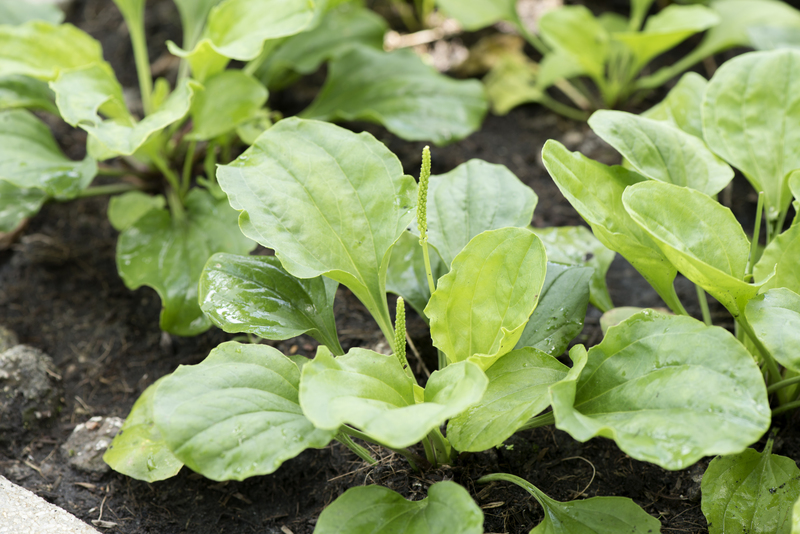Blending Nature and Pet Life in Your Garden
Posted on 18/08/2025
Introduction: Creating an Outdoor Oasis for Both Nature and Pets
Blending nature and pet life in your garden is becoming an increasingly popular trend among homeowners and garden enthusiasts. With our pets being an integral part of the family, it's only natural to seek ways to create a harmonious space where both wildlife and our furry friends can coexist happily. Whether you have dogs, cats, rabbits, or even chickens, you can design a landscape that promotes biodiversity while ensuring the safety and enrichment of your pets. This comprehensive guide will provide you with ideas, tips, and inspiration to achieve the perfect balance between natural beauty and a pet-friendly environment.

Why Blend Nature and Pet Life in Your Garden?
By integrating nature with pet life in your backyard, you not only enhance the ecological health of your space but also provide engaging environments for your pets. Here's why blending nature and pets in the garden is a rewarding choice:
- Increased Well-being: Exposure to natural elements reduces stress and promotes mental health--for pets and their owners!
- Biodiversity: Native plants attract beneficial insects and birds, encouraging a thriving ecosystem.
- Pet Enrichment: Natural spaces give pets opportunities to explore, play, and engage their senses.
- Sustainability: Incorporating native plants and organic practices supports environmental conservation.
Planning a Pet-Friendly and Wildlife-Friendly Garden
The key to successfully blending pet life with a wildlife garden is thoughtful planning. Before you begin, consider the following:
- Your Pet's Needs: What type of space and stimulation do your pets need?
- Local Wildlife: What native species frequent your area, and how can your garden support them?
- Safety Measures: Which plants and features are pet-safe and non-toxic?
- Garden Design: How can you organize your garden for harmony, aesthetics, and function?
Key Considerations Before You Start
- Size of Your Outdoor Area: Consider the layout and room needed for both plants and pets to thrive.
- Pet Species & Behavioral Traits: Dogs may dig, cats may climb, and rabbits could nibble--design accordingly!
- Sunlight & Shade: Some pets need cool retreats, while certain plants need full sun.
- Access & Security: Prevent escapes and unwanted wildlife entry by using secure fencing and gates.
Selecting Pet-Safe Plants for a Harmonious Space
One of the foundational steps in blending nature and pets in your garden is choosing non-toxic, pet-safe plants. While lush gardens add beauty and support pollinators, it's critical to ensure none of your selections harm your animal companions.
Top Non-Toxic, Pet-Friendly Plants
- Catnip & Cat Grass: Cats adore these plants, which encourage safe nibbling and play.
- Lavender (in moderation): Provides scent and color; most pets avoid eating it.
- Marigolds: These blooms repel pests and are safe for most pets.
- Sunflowers: Non-toxic and loved by pollinators.
- Spider Plants: Excellent air purifiers, safe for both cats and dogs.
- Rosemary & Thyme: Aromatic herbs that are pet-safe and useful in the kitchen.
Plants to Avoid
- Lilies: Extremely toxic to cats.
- Foxglove: Toxic to dogs, cats, and humans.
- Daffodils & Tulips: Bulbs can cause pets to become ill.
- Aloe Vera: Useful for humans, but not safe for chewing pets.
Encouraging Wildlife Without Risk to Pets
Attracting bees, butterflies, and birds enhances the garden's natural beauty and health. To blend a wildlife-friendly garden with a pet-friendly environment, select native flowering plants and berries--but be cautious that no species present a risk if ingested by your dogs or cats. Consider fencing off designated wildlife zones to keep curious pets out.
Creating Safe and Stimulating Spaces for Pets
Designing a garden for both nature and pet life doesn't mean sacrificing style or fun. Create areas that offer:
- Open lawns for play: Ideal for fetch games and running.
- Tunnels and hideaways: Logs, boxes, or tunnels for exploratory play.
- Pet splash zones: Shallow ponds or water features (with safe, sloping sides) where dogs can cool off.
- Shady retreats: Trees, shrubs, or pergolas provide vital shelter on hot days.
- Digging areas: Sandboxes or loose-soil spots channel digging instincts away from precious flowerbeds.
Pet Paths and Trails
Many pets, especially dogs, like to patrol boundaries. Install clear, mulched or paved pathways so pets can easily navigate the garden, reducing trampling in delicate areas and giving them a sense of purpose.
Garden Structures that Benefit All
Smart landscaping ensures your garden is not only welcoming for pets but also attractive to local wildlife. Consider integrating structures such as:
- Insect Hotels: Encourage beneficial insects, improving pollination and natural pest control.
- Bird Baths & Feeders: Invite birds while keeping food sources out of pets' reach.
- Compost Bins (Secure): Attract worms and bugs, but use pet-proof containers.
- Raised Beds: Protect plants from playful paws and create defined spaces for wildlife-attracting blooms.
- Vertical Gardens: Optimize space and restrict access to plants that pets shouldn't eat.
Water Features: Benefits and Safety
Including water in your garden adds peace and supports various species. For successful nature and pet integration in your backyard:
- Pet-Friendly Ponds: Use gradual slopes so animals can easily enter and exit.
- Circulating Water: Prevents stagnation, discourages mosquitoes, and keeps water fresh for pets and wildlife.
- No Toxic Additives: Never use algaecides or chemicals that might poison pets.
Always supervise curious pets around deeper water sources.
Ensuring Safety in a Multi-Species Garden
While encouraging wild visitors, it's vital to keep your pets safe from potential dangers. Essential safety tips include:
- Secure Fencing: Keeps pets from wandering and deters larger wildlife.
- Tick & Flea Prevention: Regularly check pets who roam in vegetated areas.
- Gardening without Chemicals: Opt for organic mulch and insect controls; avoid synthetic pesticides or fertilizers.
- Compost and Mulch Caution: Some types, like cocoa mulch, are toxic to pets; use wood or straw instead.
- Supervision: Observe dogs and cats outdoors, especially in early days of introducing new features, plants, or wild visitors.
Promoting Peaceful Coexistence: Training and Behavior
Helping your pets respect wildlife and plant life in the garden is crucial. With positive reinforcement, you can:
- Train pets to stay out of designated wildlife zones.
- Discourage digging in planted beds by providing alternative activities.
- Reward calm behavior around birds, bees, and butterflies.
- Use physical barriers or scent deterrents (citrus peels, vinegar) to protect vulnerable plants.
Balancing Outdoor Freedom with Responsibility
Remember, while giving pets the freedom to explore nature, stay aware of neighborhood rules about roaming animals and respectful wildlife sharing.
Natural Pest Control and the Eco-Friendly Garden
The healthiest way to blend a wildlife garden with pet life is to avoid toxic chemicals altogether. Strategies include:
- Attracting Ladybugs and Lacewings: These insects eat aphids and other pests.
- Encouraging Bats: Set up bat boxes to reduce mosquitoes.
- Copper Tape: Prevents slugs in vegetable beds--pet safe!
- Mulching: Conserves moisture and reduces weeds, without the need for herbicides.
Seasonal Care for a Pet- and Nature-Friendly Garden
Each season presents unique challenges and opportunities when managing your eco-friendly, pet-centric landscape:
- Spring: Monitor for emerging toxic weeds, prepare shaded retreats, and watch for nesting wildlife.
- Summer: Ensure constant fresh water, provide extra shade, and check for heat risks.
- Autumn: Safely store fallen fruits or nuts (some are unsafe for dogs!), and mulch for winter readiness.
- Winter: Maintain clear paths, provide shelter, and consider heated water bowls for animals and birds.

Benefits Beyond the Garden Gate
Blending nature with a pet-friendly garden delivers a cascade of benefits:
- Educational opportunity for children and adults alike about environmental stewardship.
- Encourages healthy exercise and time outdoors--for both humans and pets.
- Reduces allergies and illnesses by limiting harmful garden chemicals and promoting biodiversity.
- Supports local pollinator populations critical for agriculture and natural habitats.
Conclusion: Your Garden as a Sanctuary
By thoughtfully blending nature and pet life in your garden, you create a diverse, vibrant, and safe space that welcomes butterflies, birds, and bees--without sacrificing the happiness and enrichment of your cherished pets. Remember to prioritize safety, choose non-toxic plants, and make room for both play and wildlife protection. With planning and creativity, your outdoor space can become a sanctuary where all creatures, great and small, thrive in harmony. Embrace this rewarding journey and discover the true joy in sharing nature with your four-legged family members.

